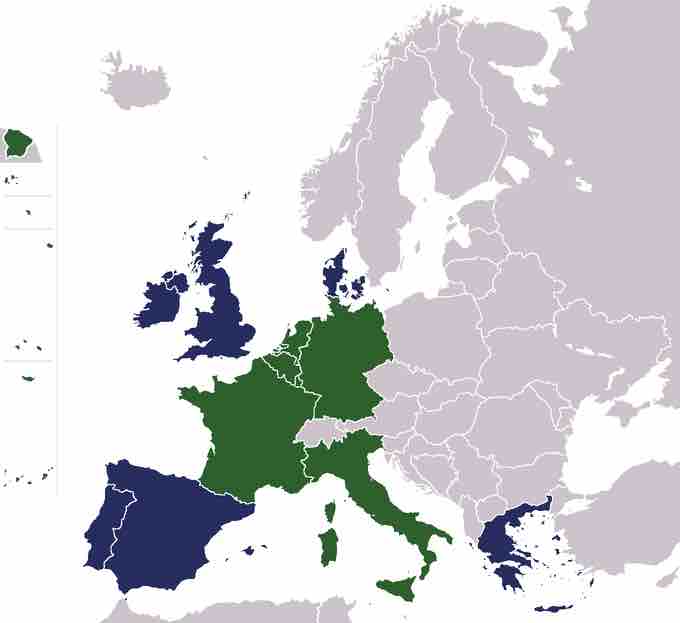A common market is a first stage towards a single market and may be limited initially to a free trade area with relatively free movement of capital and of services, but not so advanced in reduction of the rest of the trade barriers.
The European Economic Community (EEC) (also known as the Common Market in the English-speaking world and sometimes referred to as the European Community even before it was renamed as such in 1993) was an international organization created by the 1957 Treaty of Rome. Its aim was to bring about economic integration, including a common market, among its six founding members: Belgium, France, Germany, Italy, Luxembourg, and the Netherlands.
It gained a common set of institutions along with the European Coal and Steel Community (ECSC) and the European Atomic Energy Community (EURATOM) as one of the European Communities under the 1965 Merger Treaty (Treaty of Brussels).
Upon the entry into force of the Maastricht Treaty in 1993, the EEC was renamed the European Community (EC) to reflect that it covered a wider range of policy. This was also when the three European Communities, including the EC, were collectively made to constitute the first of the three pillars of the European Union (EU), which the treaty also founded. The EC existed in this form until it was abolished by the 2009 Treaty of Lisbon, which merged the EU's former pillars and provided that the EU would "replace and succeed the European Community. " The main aim of the EEC, as stated in its preamble, was to "preserve peace and liberty and to lay the foundations of an ever closer union among the peoples of Europe. " Calling for balanced economic growth, this was to be accomplished through:
- The establishment of a customs union with a common external tariff
- Common policies for agriculture, transport, and trade
- Enlargement of the EEC to the rest of Europe
For the customs union, the treaty provided for a 10% reduction in custom duties and up to 20% of global import quotas. Progress on the customs union proceeded much faster than the 12 years planned. However, France faced some setbacks due to its war with Algeria.
The six states that founded the EEC and the other two communities were known as the "inner six" (the "outer seven" were those countries who formed the European Free Trade Association). The six were France, West Germany, Italy, and the three Benelux countries: Belgium, the Netherlands, and Luxembourg. The first enlargement was in 1973, with the accession of Denmark, Ireland, and the United Kingdom. Greece, Spain, and Portugal joined in the 1980s. Following the creation of the EU in 1993, it has enlarged to include an additional 15 countries by 2007.
There were three political institutions that held the executive and legislative power of the EEC, plus one judicial institution and a fifth body created in 1975. These institutions (except for the auditors) were created in 1957 by the EEC but from 1967 on, they applied to all three communities. The council represents governments, the Parliament represents citizens, and the commission represents the European interest.

European Economic Community
Original member states (blue) and later members (green)